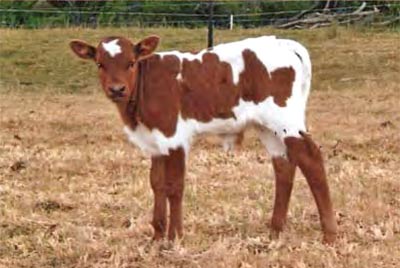Bull calves, like all calves, need timely, high-quality colostrum at birth which is critical to future health and performance. Creep feeding then becomes an option based on cowherd goals, forage type and availability and marketing. “Bulls can be started on creep feed immediately but it becomes more difficult to discern the productivity of a cow because creep feed intake will vary among calves,” Martin explains. In situations where forage quality is poor late in the grazing season, creep feeding is a management tool to keep bull calves growing, and can be a weaning management tool.
If creep-fed, bull calves should be fed low-starch, high-protein creep feed, ideally a dried distiller’s grains or gluten-based creep including an intake limiter to get more efficient gain. It’s important that the creep feed is designed to promote growth, but is not fattening. Also, Martin notes, it is probably wise to avoid creep-feeding future replacement heifers to ensure they do not deposit fat in their udders as calves which will reduce their future milk production.
The skinny on overfat young bulls
Groups of yearling bulls should average between 0.15″ and 0.30″ of backfat, depending on age at scanning, biological type and environmental factors.
Low-starch rations containing high energy byproduct feeds in combination with high levels of roughage allow bulls to gain 3 lb/day or more, without depositing excess fat. If young bulls are too fat before the breeding season, it’s a problem to get them “hardened up”, or conditioned for breeding season. Long-term, overfat bulls tend to lose weight rapidly when breeding season begins and then quit breeding before the breeding season is over. They also may be more likely to have experienced acidosis because of the energy level of the diet they received; if they did experience acidosis at some point during development they, are more likely to have long-term foot soundness issues.
Feeding a percentage of the trace minerals from an organic source is advised. Deficiencies are not only possible but likely without supplementation. A comprehensive trace mineral and vitamin package is cheap insurance compared to subpar semen test results. The bottom line is that developing bulls should receive a complete vitamin/mineral supplement and should not be fed to the point they experience acidosis or bloat, or deposit fat in the scrotum.
First breeding season
It’s difficult to manage nutrition of the young bull after turnout with the cows, but there are some things that can be done to maximize the breeding season. Bulls should be transitioned slowly to a roughage diet and introduced to pasture at least 10 days before being turned in with the cows.
Most bulls will lose some weight during breeding simply due to the miles they cover in the breeding process. If possible, put yearling bulls in pastures with less area to cover, to limit the amount of weight lost. Make sure they have access to salt and mineral at all times during the breeding season.
Many young bulls remain with cows long after the cows are bred, but most young bulls are not smart enough to quit chasing cows and continue to lose weight. After 45–60 days with cows, get yearling bulls out of the cowherd.

